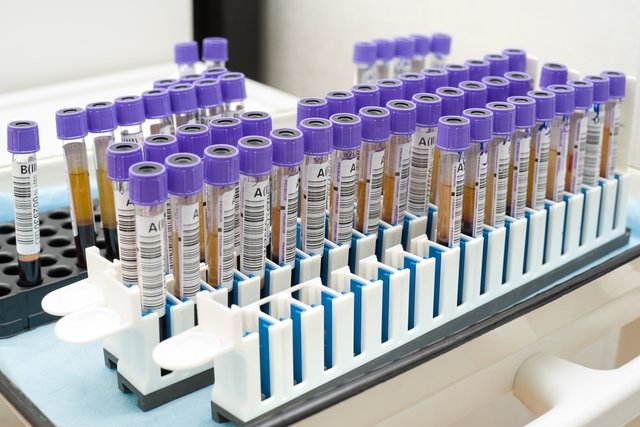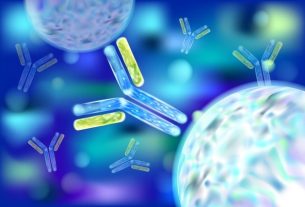LDH, also called lactic dehydrogenase or lactate dehydrogenase, is an enzyme present within cells responsible for the metabolism of glucose in the body. Changes in LDH levels may indicate the presence of acute or chronic diseases that must be evaluated by a doctor.
This enzyme can be found in various organs and tissues and, therefore, its elevation is not very specific, and other tests are recommended to reach a diagnosis.
LDH analysis is mainly requested in the case of changes in the heart or liver, to evaluate the progress of these diseases and, thus, guide the best treatment according to the development of the disease.

What is the exam for?
The LDH test may be requested by the doctor as a routine test, along with other laboratory measurements. However, this test is mainly indicated in the case of investigation of heart problems, being requested together with Creatine phosphokinase (CK) and troponin, or liver alterations, also requesting the measurement of TGO/ AST, TGP/ ALT and gamma-GT. Find out about other tests that evaluate the liver.
Furthermore, since COVID-19 is related to several hematological and biochemical changes, the doctor may also request an LDH measurement, along with a complete blood count and measurement of D-dimer, ferritin and C-reactive protein, for example. , with the aim of confirming the infection and assessing the severity of the disease.
To take the test, most of the time it is not necessary to fast or any other type of preparation, however some laboratories indicate that the person must fast for at least 4 hours. Therefore, before carrying out the test, it is important to find out at the laboratory what the appropriate procedure is, in addition to informing the use of medications.
Reference value
Normal lactate dehydrogenase values may vary depending on the laboratory, and are normally considered to be between 120 and 246 IU/L in adults.
What does high LDH mean?
Increased LDH is usually indicative of organ or tissue damage. This is because as a consequence of cellular damage, the LDH contained within the cells is released and circulates in the bloodstream, with its concentration assessed through a blood test. The main situations in which an increase in LDH can be seen are:
- Megaloblastic anemia;
- Carcinoma;
- Septic shock;
- Heart attack;
- Hemolytic anemia;
- Leukemia;
- Mononucleosis;
- Hepatitis;
- Obstructive jaundice;
- Cirrhosis.
Furthermore, LDH levels in the blood may be increased in the case of COVID-19, and other laboratory changes may be observed, such as a decrease in lymphocyte levels and an increase in the concentration of C-reactive protein and D-dimer, for example. Some studies indicate that the higher the LDH level, the greater the severity of the disease.
Some situations may increase LDH levels, which are not indicative of disease, especially if other laboratory parameters requested are normal. Some of the conditions that can alter LDH levels in the blood are intense physical activity, use of some medications and pregnancy.
What can be low LDH
A decrease in the amount of lactate dehydrogenase in the blood is normally not worrying and is not related to disease, and is not a reason for investigation. In some cases, a decrease in LDH may be related to excess vitamin C, and a change in the person’s eating habits may be recommended.
Types of LDH
LDH can be divided into 5 types, known as isoenzymes, according to their location in the body, such as:
- LDH-1which is present in the heart, red blood cells and kidneys;
- LDH-2which can be found in the heart, in smaller quantities, and in leukocytes;
- LDH-3which is present in the lungs;
- LDH-4which is found in the placenta and pancreas;
- LDH-5which is found in the liver and skeletal muscle.
Identification of the LDH isoenzyme through laboratory tests helps the doctor to know which organ is affected and better guide treatment.
Bibliography
- FORKASIEWICZ, Agata; DOROCIAK, Maja; STACH, Kamilla, et al. The usefulness of lactate dehydrogenase measurements in current oncological practice. Cellular & Molecular Biology Letters. Vol 35. 25 ed; 2020
- FARHANA, AISHA; LAPPIN, SARAH L. Biochemistry, Lactate Dehydrogenase. 2021. Available at: <https://www.ncbi.nlm.nih.gov/books/NBK557536/>. Accessed on September 10, 2021
- KANTRILL, Aziza; ZIATI, Jihane; KHALIS, Mohamed et al. Hematological and biochemical abnormalities associated with severe forms of COVID-19: A retrospective single-center study from Morocco. PLOS One. 2021
- BRAZILIAN SOCIETY OF CLINICAL ANALYSIS. Laboratory changes in patients with Covid-19. Available at: <https://www.sbac.org.br/blog/2020/03/26/alteracoes-laboratoriais-em-pacientes-com-covid19/>. Accessed on March 17, 2021
- HINRICHSEN, Sylvia L. Causes of…: Differential diagnosis. 1 ed. Rio de Janeiro: Medbook, 2014. 289-290.

Sign up for our newsletter and stay up to date with exclusive news
that can transform your routine!
Warning: Undefined array key "title" in /home/storelat/public_html/wp-content/plugins/link-whisper-premium/templates/frontend/related-posts.php on line 12
Warning: Undefined array key "title_tag" in /home/storelat/public_html/wp-content/plugins/link-whisper-premium/templates/frontend/related-posts.php on line 13



